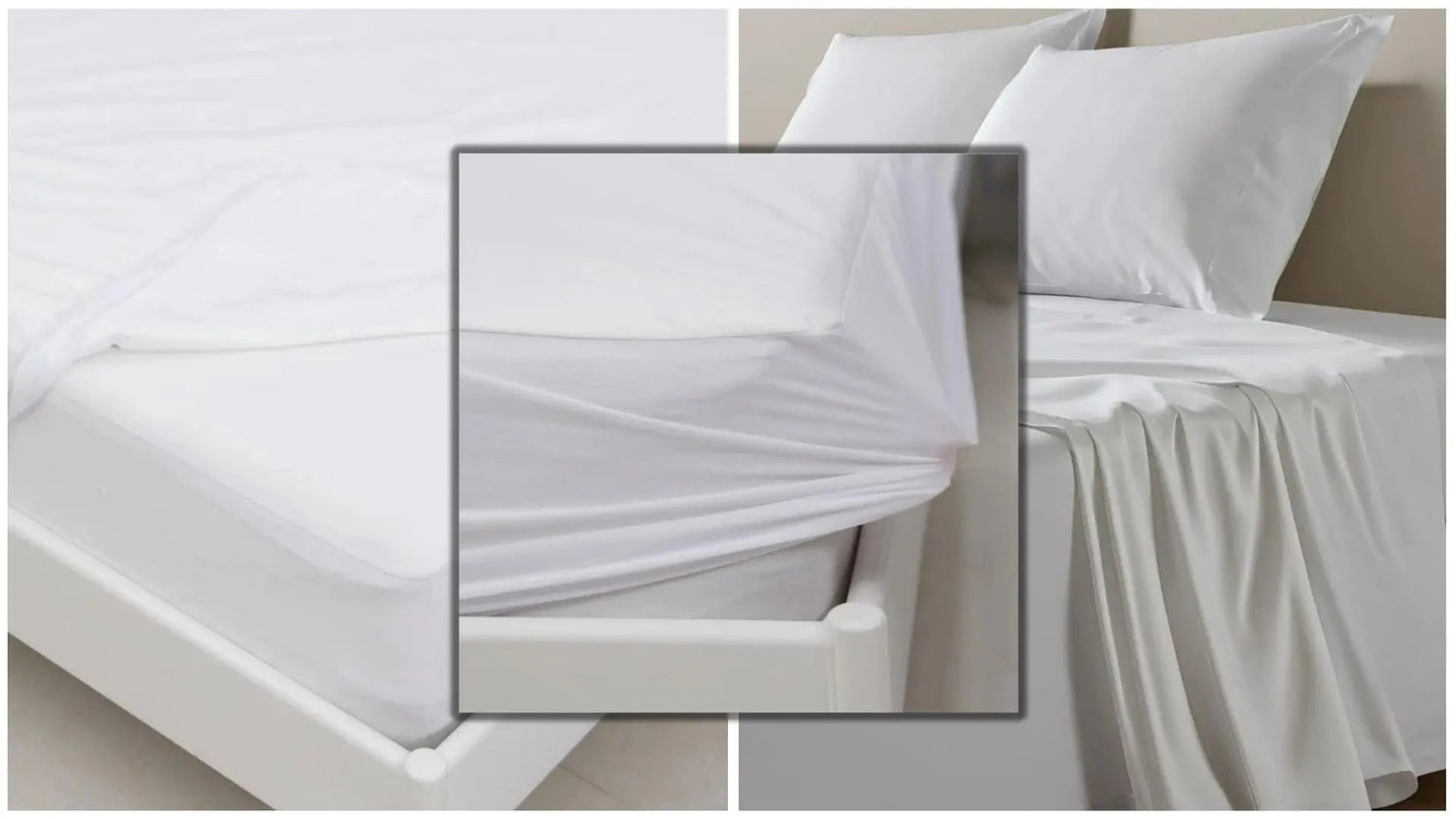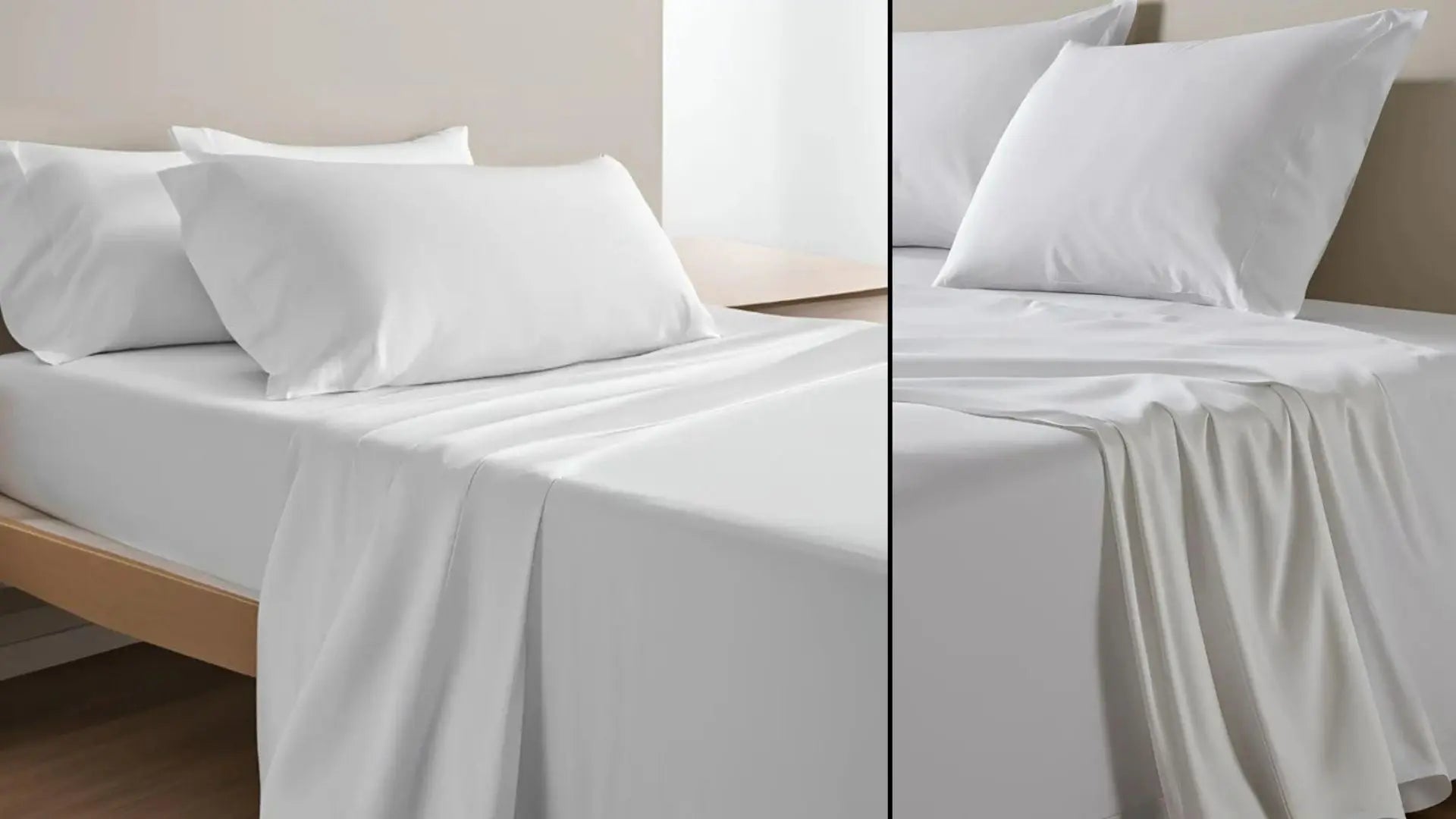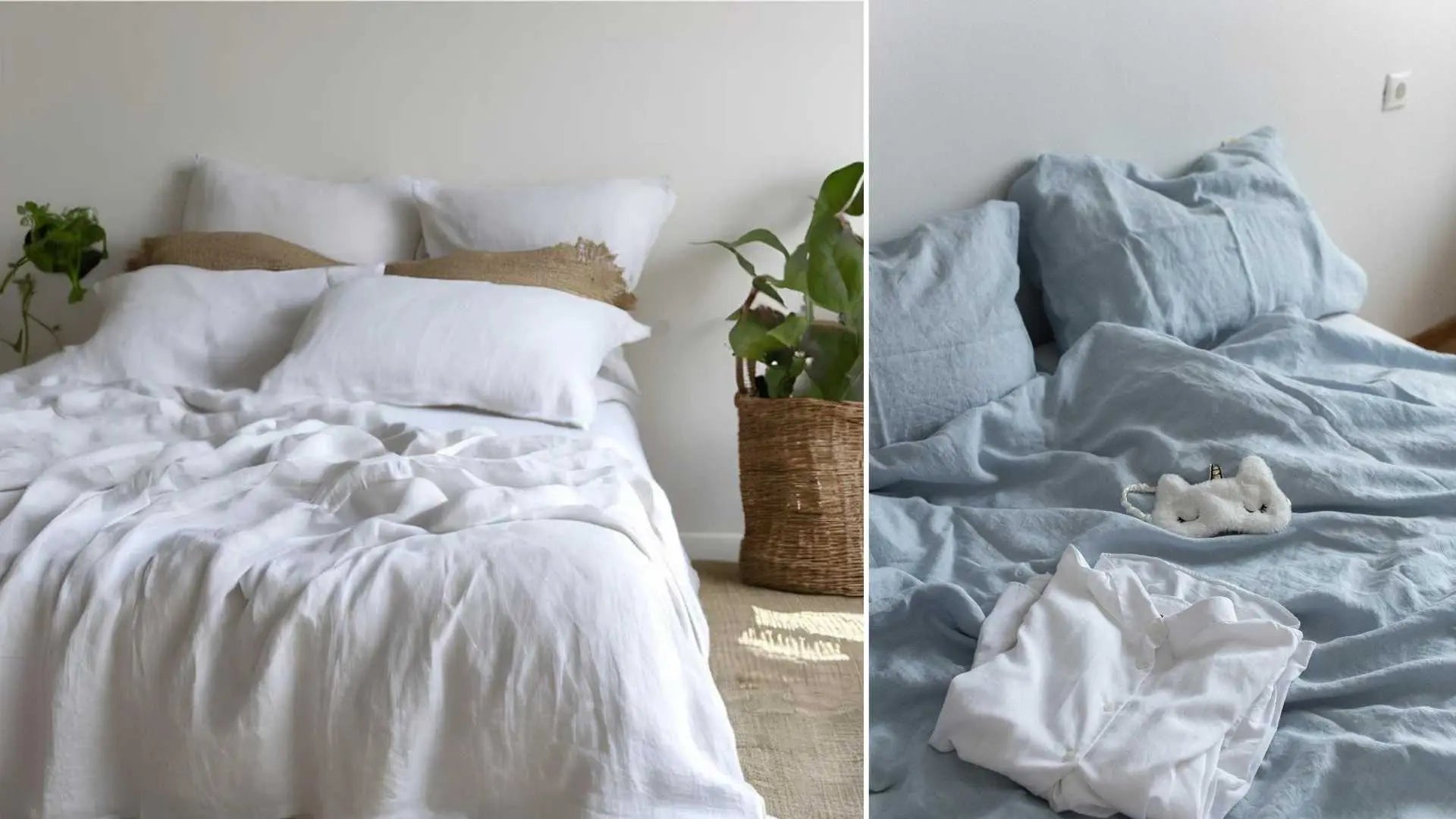A mattress protector is an essential piece of bedding, acting as a shield for your mattress against spills, allergens, and general wear and tear. But just like any other part of your bed, it needs proper cleaning to stay effective. Washing your mattress protector regularly ensures a healthier sleep environment, prolongs its lifespan, and keeps your bed fresh and hygienic.
In this detailed guide, we’ll walk you through step-by-step washing instructions, material-specific care tips, and advice on avoiding common mistakes to maintain your mattress protector’s performance.
Why Do You Need to Wash a Mattress Protector?'
Your mattress protector isn’t just a passive layer—it’s working overtime to keep your mattress safe. But without proper cleaning, it can become less of a protector and more of a problem.
1. Maintains Hygiene
Your mattress protector collects sweat, skin cells, and dust daily. Over time, this buildup can lead to bacteria growth and funky odors. Regular washing keeps your bed a clean, healthy haven.
Washing it regularly prevents bacteria buildup and unpleasant odors.
2. Controls Allergens
For allergy sufferers, a mattress protector is a lifeline.
A study from the American Academy of Allergy, Asthma & Immunology found that washing bedding weekly can reduce allergen exposure by up to 90%. Skip this step, and you might wake up sneezing instead of refreshed.
3. Prolongs Protection
Whether it’s waterproofing or dust mite resistance, proper cleaning ensures your mattress protector retains its protective properties over time.'
For example, high heat can ruin a waterproof membrane, while harsh detergents can strip away hypoallergenic coatings. Washing it right keeps it performing at its best.
4. Extends Mattress Life
A quality mattress is an investment, and your protector is its first line of defense against stains and damage. But a dirty or worn-out protector can’t shield effectively.
Regular cleaning ensures it remains a reliable barrier, saving you from costly mattress replacements.
Here is a detail blog on how to choose a mattress protector
Types of Mattress Protectors and Their Care Requirements
Not all mattress protectors are the same, and knowing your type is key to washing it correctly.
Here’s a detailed look at the most common types, their benefits, drawbacks, and care requirements:
|
Type of Mattress Protector |
Material |
Care Tips |
|
Standard Cotton Protector |
Cotton or Bamboo |
Machine wash on a gentle cycle; air-dry or tumble dry on low heat. |
|
Waterproof Mattress Protector |
Polyester or Vinyl |
Use cold water and mild detergent; avoid high heat to preserve waterproofing. |
|
Encasement Protector |
Mixed Fabrics |
Wash on delicate cycle; zip closure before washing to prevent snags. |
|
Tuft & Needle Protector |
Blended Fabrics |
Follow specific care instructions; often includes gentle wash and low-heat drying. |
Which Protector Suits You?
- Parents or Pet Owners: Go for a waterproof protector to handle spills and accidents with ease.
- Allergy Sufferers: An encasement protector offers 360-degree coverage against dust mites and allergens.
- Hot Sleepers: A cooling protector enhances comfort but needs gentle care to maintain its tech.
How to Wash a Mattress Protector: Step-by-Step Guide

1. Preparation
- Remove It: Strip your mattress and give the protector a good shake outdoors or over a trash bin to dislodge dust and debris.
- Inspect for Wear: Look for tears, worn spots, or damaged zippers. Small rips can be stitched up, but major damage might signal replacement time.
- Pre-Treat Stains: Tackle stubborn spots with a gentle stain remover or a DIY paste of baking soda and water. Let it sit for 15–30 minutes before washing.
Pro Tip: Always check the care label for specific instructions before washing.
2. Choose the Right Detergent:
Choosing the right detergent is very important while washing a mattress protector. Here is what you need to keep in mind.
- Use Mild Detergents: Harsh chemicals can degrade waterproof layers or irritate sensitive skin. Opt for fragrance-free or plant-based detergents.
- Avoid Fabric Softeners: They can leave residues that reduce the protector’s breathability and effectiveness.
3. Select the Correct Water Temperature
- Cold Water: Best for waterproof protectors to maintain the integrity of the waterproof membrane.
- Warm Water: Suitable for cotton or bamboo protectors to remove sweat and oils effectively.
Pro Tip: If unsure, stick with cold water to avoid accidental shrinking or damage.
4. Wash on a Gentle Cycle
- Why It’s Important: The delicate cycle reduces stress on the fabric, preventing wear and tear.
- Best Practice: Wash the protector alone or with a few lightweight items to avoid overloading the machine.
5. Drying Methods
- Tumble Dry on Low Heat: Protects waterproof layers and prevents shrinkage.
- Air-Drying: Lay it flat on a drying rack or hang it on a clothesline in the shade. Flip it halfway to dry evenly.
- Avoid Direct Sunlight: Prolonged exposure can degrade waterproof coatings and cause fading.
Care Tips
- Skip Fabric Softeners: They coat the fibers, clogging up that breathable goodness and making the protector less effective at wicking moisture.
- Freshen Up: Between washes, sprinkle baking soda over the surface, wait 30 minutes, and vacuum it off to banish odors
Material-Specific Washing Instructions

1. Cotton Mattress Protectors
Cotton mattress protectors are loved for their breathability and comfort, but proper care keeps them soft and long-lasting. Here’s an improved version:
- Preparation:
- Shake off loose dust, crumbs, or pet hair over a trash bin to reduce debris in the wash.
- Spot-treat stains with a mix of mild detergent and water or a baking soda paste (let it sit for 15–30 minutes, then blot with a damp cloth).
- Washing Steps:
- Wash in warm water (30–40°C / 86–104°F) with a mild, fragrance-free detergent. Warm water effectively removes sweat, oils, and dirt without damaging cotton fibers (hot water can shrink or weaken them).
- Use a gentle cycle to minimize wear. Wash alone or with lightweight items like pillowcases to avoid overloading the machine.
- Drying Steps:
- Tumble dry on low to gently dry the fabric—high heat can shrink cotton or make it rough. Check periodically and remove when just dry.
- Air-dry option: Lay flat on a rack or hang in the shade, flipping halfway for even drying.
- Care Tip:
- Avoid over-drying, which stiffens cotton. If it feels rough, spritz with water and tumble on low for 5 minutes to soften. Skip fabric softeners—they reduce breathability. Instead, add a drop of lavender oil to the rinse cycle for a natural scent.
2. Waterproof Mattress Protectors
Waterproof protectors shield against spills, but their coatings need special care. Here’s how to expand your advice:
-
Preparation:
- Shake off dust or debris over a bin.
- Spot-clean stains with a damp cloth and a tiny drop of mild soap—avoid soaking to protect the waterproof layer.
-
Washing Steps:
- Use cold water (below 30°C / 86°F) with a gentle detergent. Cold water preserves the waterproof membrane (hot water can cause cracking or peeling, known as delamination).
- Run a gentle cycle and wash solo or with minimal items for thorough cleaning.
-
Drying Steps:
- Air-dry by hanging or laying flat in a shaded, well-ventilated area—flip occasionally for even drying.
- Tumble dry on low heat if needed, but remove while slightly damp to finish air-drying. High heat can melt or warp the coating.
-
Care Tip:
-
Never use bleach or fabric softeners—bleach erodes the waterproofing, and softeners leave a residue that reduces effectiveness. Test the waterproofing post-dry by pouring a little water on it; if it beads up, it’s intact.
-
Never use bleach or fabric softeners—bleach erodes the waterproofing, and softeners leave a residue that reduces effectiveness. Test the waterproofing post-dry by pouring a little water on it; if it beads up, it’s intact.
3. Encasement Protectors
- Preparation:
- Remove slowly to avoid stirring up allergens, then shake over a trash bin.
- Zip the protector closed before washing to protect the zipper from snags or damage.
- Washing Steps:
- Use cold water with a mild, fragrance-free detergent to protect the fabric and any pest-repellent treatments.
- Select a gentle cycle and wash with minimal extras for proper cleaning.
- Drying Steps:
- Air-dry in a shaded, breezy spot or lay flat—avoid sunlight to prevent fading.
- Tumble dry on low if necessary, removing while damp to finish drying naturally.
- Care Tip:
- Check for bed bugs (tiny reddish-brown bugs, white eggs, or dark droppings in seams) after washing, as encasements are often used for pest control. If spotted, consult a professional before reuse.
Recommended Product: Try Raia Home’s Mattress Protector, combining breathable materials with superior waterproofing for easy care.
How Often Should You Wash Your Mattress Protector?
|
Usage Type |
Recommended Washing Frequency |
|
Regular Use |
Every 2–4 weeks |
|
Allergy Management |
Weekly |
|
Pet Owners |
Biweekly or as needed |
|
After Illness |
Immediately after recovery |
1. Regular Use
Wash every 2–4 weeks. This removes sweat, dust, and allergens before they accumulate, keeping your bed hygienic.
2. Allergy Management
Wash weekly. Dust mites and pollen can trigger allergies—weekly washing cuts exposure significantly (up to 90%, per allergy experts).
3. Pet Owners
If pets share your bed, wash your mattress protector biweekly or as needed to address fur, dander, and potential accidents.
4. After Illness
Wash immediately to eliminate germs and bacteria.
Pro Tip: Wash sooner if you notice odors, stains, or worsening allergies.
Can You Put a Mattress Protector in the Dryer?
Drying your mattress protector correctly is crucial to avoid shrinkage or damage.
Dryer Tips:
- Low Heat Setting: Use low heat to protect waterproof layers and prevent shrinking.
- Add Dryer Balls: Helps reduce drying time and prevents clumping.
- Remove While Damp: Take the protector out while slightly damp and lay flat or hang to finish drying, reducing wrinkles.
Air-Drying Option:
- Hang your protector in a shaded, well-ventilated area.
- Avoid direct sunlight, which can weaken waterproof coatings or cause fading.
Pro Tip: For waterproof protectors, air-drying is often the safest option.
Common Mistakes to Avoid When Washing Mattress Protectors

-
Using Bleach or Harsh Chemicals
- Why It’s a Problem: These can weaken fabric fibers and damage waterproof membranes.
- Solution: Stick to gentle, bleach-free detergents.
-
Skipping Pre-Treatment for Stains
- Why It’s a Problem: Stains may set permanently if not addressed before washing.
- Solution: Spot-clean with a baking soda paste or mild stain remover.
-
Overloading the Washer
- Why It’s a Problem: Overloading prevents proper cleaning and can stress the fabric.
- Solution: Wash your protector alone or with lightweight items.
-
Using High Heat for Drying
- Why It’s a Problem: High heat can shrink fabrics and damage waterproof coatings.
- Solution: Always tumble dry on low heat or air-dry.
-
Ignoring Care Labels
- Why It’s a Problem: Each protector has specific care needs.
- Solution: Read and follow the care instructions carefully.
FAQs About Washing Mattress Protectors
1. Can you iron a mattress protector?
No, ironing can melt waterproof layers, shrink fabrics, or alter texture. Smooth it while damp instead.
2. What’s the best way to store a mattress protector when not in use?
Fold it neatly and store it in a cool, dry place away from direct sunlight or humidity.
3. How do you clean a waterproof mattress protector?
Wash with cold water and mild detergent. Air-dry or tumble dry on low heat to preserve waterproofing.
4. Can mattress protectors be dry cleaned?
Most mattress protectors are not suitable for dry cleaning. Always check the care label for instructions.
Conclusion
A clean mattress protector is key to a healthier, more comfortable sleep environment. By following these detailed washing tips, you’ll keep your protector fresh, effective, and long-lasting. Regular care not only improves hygiene but also maintains your protector’s functionality, ensuring your mattress stays in top condition.
Ready to protect your mattress better? Explore Raia Home’s premium Mattress Protector, designed for easy care and ultimate comfort.






Leave a comment
This site is protected by hCaptcha and the hCaptcha Privacy Policy and Terms of Service apply.